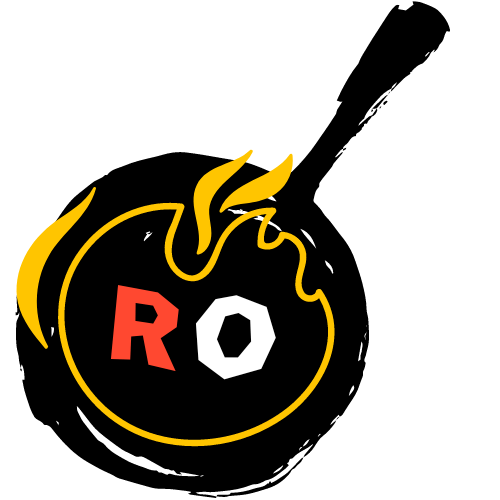In the bustling world of the food industry, standing out is a necessity. This blog post delves into the intricacies of restaurant branding and identity development. We'll explore the importance of a unique brand, the steps to create a compelling identity, and the role of consistency in resonating with your target audience.
The Importance of Branding in the Restaurant Industry
A restaurant's brand is more than just a logo or a catchy tagline. It's an embodiment of the restaurant's personality, values, and the experiences it offers to its customers. A strong brand can differentiate a restaurant from its competitors, create a loyal customer base, and ultimately drive business growth.
The food industry is a crowded marketplace, teeming with a wide array of dining options. In such a competitive environment, a unique and compelling brand can be the deciding factor that draws customers to your restaurant over others. It's not just about serving great food; it's about creating a memorable dining experience that aligns with your brand's identity.
A well-defined brand can also guide business decisions, from menu selection to interior design, and even to the type of staff you hire. Every aspect of your restaurant should reflect your brand, creating a cohesive and immersive experience for your customers.
Steps to Develop a Restaurant Brand Identity
Developing a restaurant brand identity is a multi-step process that requires careful thought and planning. It begins with understanding your target audience and defining your restaurant's unique selling proposition (USP). Your USP is what sets your restaurant apart from others. It could be your unique cuisine, exceptional service, or a novel dining concept.
Once you've defined your USP, the next step is to create a brand personality. This is a set of human characteristics that your brand embodies. For example, your restaurant could have a fun, quirky personality if you're targeting a younger demographic, or a sophisticated, elegant personality if you're targeting an upscale market.
The visual elements of your brand, such as your logo, color scheme, and typography, should reflect your brand personality. They should be distinctive and consistent across all your marketing materials, from your menu to your social media posts.
The Role of Consistency in Branding
Consistency is key in restaurant branding. It creates a familiar and reliable image that customers can identify and connect with. Every interaction a customer has with your restaurant, whether it's visiting your website, seeing an advertisement, or dining in your restaurant, should reinforce your brand identity.
Consistency extends beyond visual elements. It also applies to the quality of your food and service, the tone of your communications, and even the ambiance of your restaurant. All these elements should work together to create a cohesive brand experience that resonates with your target audience.
However, consistency doesn't mean being rigid or unchanging. As your restaurant grows and evolves, your brand should also adapt while maintaining its core identity. This allows your brand to stay relevant and engaging to your customers.
Implementing Your Brand Identity
Once you've developed your brand identity, the next step is to implement it across all aspects of your restaurant. This includes your menu design, interior decor, staff uniforms, and customer service style. Each of these elements should reflect your brand personality and reinforce your brand message.
Your marketing materials, both online and offline, should also align with your brand identity. This includes your website, social media posts, advertisements, and even your restaurant's signage. A consistent and cohesive brand presentation can enhance your restaurant's image and attract more customers.
Remember, your brand is not just about what you say about your restaurant, but also about what others say about it. Encourage your customers to share their dining experiences and engage with your brand on social media. This can help amplify your brand message and reach a wider audience.
Evaluating and Evolving Your Brand
Branding is not a one-time effort but an ongoing process. As your restaurant grows and the market changes, your brand should also evolve. Regularly evaluate your brand's performance and make necessary adjustments to stay relevant and appealing to your customers.
Customer feedback can provide valuable insights into how your brand is perceived. Use this feedback to refine your brand identity and improve your customer experience. Remember, a successful brand is one that resonates with its customers and consistently delivers on its promises.
The Power of a Strong Restaurant Brand
A strong restaurant brand can be a powerful tool for business growth. It can differentiate your restaurant in a crowded market, attract and retain customers, and drive customer loyalty. More than just a logo or a tagline, your brand is the heart and soul of your restaurant. It embodies your values, tells your story, and creates a memorable dining experience that keeps customers coming back.
Developing a compelling brand identity requires careful planning and consistent execution. But the effort is well worth it. A strong brand can elevate your restaurant from a dining option to a dining destination, creating a lasting impact on your customers and your bottom line.
Wrapping Up: The Journey of Restaurant Branding and Identity Development
The journey of restaurant branding and identity development is a continuous process that requires strategic planning, consistent execution, and regular evaluation. A strong brand can set your restaurant apart, create memorable dining experiences, and foster customer loyalty. It's not just about serving great food; it's about creating a brand that resonates with your customers and reflects the unique personality of your restaurant.

